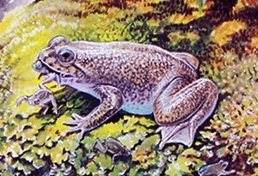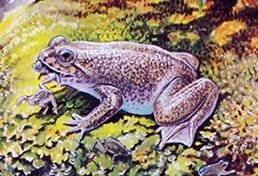Podcast: Play in new window
BOB HIRSHON (host):
Undoing extinction. I’m Bob Hirshon and this is Science Update.

In the future, extinction may not always be final. That’s the goal of the Lazarus Project, directed by zoologist Michael Archer of the University of New South Wales in Australia. Like the fictional “Jurassic Park” scientists, they’re trying to clone extinct creatures from preserved DNA. And they’ve just hit a milestone with a species of gastric-brooding frog, a bizarre amphibian that incubated its young in its stomach. It’s been gone for over 30 years, but Archer’s team had access to frozen tissue samples.
MICHAEL ARCHER (University of New South Wales, Australia):
So we thought we’d give a go, using a distantly related living frog to provide the host eggs, and the nuclei from this frozen tissue.
HIRSHON:
After several attempts, the extinct DNA revived, and the single cell developed into an early-stage embryo of the lost species. Now, Archer’s team is trying to figure out why it stopped there, and how to take it further. I’m Bob Hirshon for AAAS, the Science Society.

